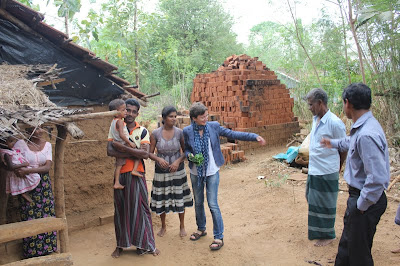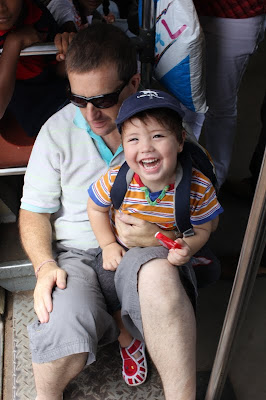a tangible place - where my energy comes up through my feet and my heart and my head can come away from this place with clarity, vision, and newness.
The southern alps from the Okarito trig. A Turangawaewae for me. Photo: Bob McKerrow
I need to return to NZ every year or at the outside, every 18 months.The South Island of New Zealand is my Turangawaewae. With the type of work I do, my gas tanks empty after a year or so and I need to replenish my wairua (spirituality) and aroha (love). When I return I feel a wave of peace as the mountains embrace me, the sea soothes me, the rivers energize me, the forests oxygenate me, and, my friends and family reaffirm who I am.
They give and I give. Spontaneous reciprocacy. Manakitanga is a Maori concept defining the relationship between caring and sharing. That is what my life is about when I return to the South Island.
For those of you unfamiliar with Maori concepts, Turangawaewae ‘is the place where I stand.’
‘The place where my ancestors stood.’
‘ The place that gives me power.’
Te Ara describes it as the place - a tangible place - where my energy comes up through my feet and my heart and my head can come away from this place with clarity, vision, and newness. My footstool.
My Turangawaewae. A photo of me whitebaiting on the Hokitika River a few years back.
Auckland, or the North Island is not my Turangawaewae, but the northern island of Aotearoa.
So when I arrived in Auckland in mid-July, I felt a little on foreign soil.
I was selected by the IFRC (International Red Cross) through the NZ Red Cross to be keynote speaker at IBANZ, the annual conference of Insurance Brokers Association of New Zealand, and my whole visit was sponsored by Lumley Insurance.. This was a daunting task!
The person who was my guide and mentor in a jungle of insurance brokers and insurance industry people in Auckland for three days, was Pete McArthur. Pete is from Christchurch, lived in Nelson in the South Island and has a generousity of spirit and wisdom,
Left: Bob McKerrow (l) and Pete McArthur
So Pete in many ways, was like a Kaumatua, a chief or wise man to me. I may be an experienced speaker, but it is quite nerve-wracking preparing for a group of people you know little about. I had to give quite a comprehensive 45 minute presentation to over 500 insurance brokers who were paying big money to learn. They get learning points towards retaining their certification so as a result of the Christchurch earthquakes, the NZ insurance industry was in a tailspin and looking to learning more about other earthquake recovery operations and ‘leadership under adversity.’ Pete was convinced I was the man to pass on my earthquake/disaster recovery experience in such a way, it would help the insurance brokers in their day-to-day work.
I loved the way Pete, with his colleague Kristin, (pictured above) worked patiently and firmly with me ensuring that my many of years of experience were distilled and crafted into bullet points, and pitched in such a way, would achieve maximum impact by passing on crucial lessons learned. In the photo above, Pete told me to lay copies of all my overheads on a table, and we kept the good ones and rejected ones that were peripheral. It was great to have a coach and mentor and the moral of the story is, there is always someone more experienced around, who is willing to help. Don't be too proud to receive advise and support.
One of the key messages of my presntation centred round:
Seek “breakthrough initiatives” to accelerate recovery and build back better and avoid a culture of risk aversion. Business as usual will not suffice in unusual situations.
The next was on:
The right person in the right place at the right time was another (See how place or Turangawaewae creeps into my vocabulary)
Building back better was another key messages that I elaborated on considerably.
I was very impressed with John Lyon (3rd from the left) who is the CEO of Lumleys NZ. He is an Irishman from Dublin and introduced me as keynote speaker. John was appointed CEO of Lumley in May 2008 and is responsible for strategic direction and operational performance of the company. In the photo are Sophie Lister, Kristin McNamara, John and Karl Armstrong.
.
I also gave presentation to Lumley Insurance in Auckland, Wellington and Christchurch. Lumley Insurance kindly gave me a NZ$ 10,000 cheque for my speaker's fee which I gave to the New Zealand Red Cross Christchurch Earthquake Fund.
It was also a pleasure to give talks to NZ Red Cross staff at national headquarters in Wellington and to staff and volunteers working with the Christchurch earthquake operation.
Aoraki Mt. Cook another important Turangawaewae for me. I started climbing here at the age of 18 and re-visit often. Photo: Bob McKerrow
Left: a photo of Brian Taylor (r) and me (l)
My daughter Aroha and I visited Prue Taylor, who is the wife of Brian Taylor who was killed in the Christchurch earthquake on 22 February this year. Prue was at home with her son Hamish when we arrived so it was good to share feelings and strong memories of Brian over a pot of tea. Prue is Principal at Christchurch Girl's High School and had to deal with the death of her husband, a damaged school, and traumatised students and staff. What a strong and dignified friend.Prue is! I was at their engagement 45 years ago.
It was also a joy to catch up with my daughters and grandchildren in both Auckland and Christchurch, and spend quality time with them. We toured the earthquake affected areas of Christchurch together, walked along the beaches at sumner and North new Brighton and had some great parties and dinners.
I wrote this posting before I got back to Colombo on Friday 22 July, and when I went to work, there was a copy of a book, written by my nephew, Mike Brown, my elder sister’s son.
When I was director of the NZ Outward Bound School, Mike came as a 20 year old and worked for some months as a volunteer. He is now a very succesful academic and a senior lecturer in the sport and liesure department at Waikato Univeristy., and a top level triathlete.
Here is a little about Mike's book A Pedagogy of Place -Outdoor Education for a Changing World by Brian Wattchow and Mike Brown. I found it a fascinating read.
Current outdoor education theory and practice is influenced by cultural ideas about risk and adventure, and by psychological theories of personal and social development. However, in recent decades the professional discourse of outdoor education has made a noticeable shift to include education for the ‘environment’ and ‘nature’. This has resulted in a mismatch between theory and practice: traditional notions of proving oneself ‘against’ the challenges of the outdoors are antithetical to the development of an empathetic relationship with outdoor places, which growing concern with today’s environment demands.
The braided Waiho River drains into the Tasman Sea. The waters of the Spenser, Burton, Callery and Franz Josef Glaciers make up the mighty Waiho.
This book will be the first of its kind to articulate a renewal of philosophy and practice for outdoor education that is in keeping with the educational needs of today’s young people as they grapple with considerable social and ecological changes in a rapidly changing world. The authors draw extensively on international, national and local literature and provide compelling case studies drawn from the Australian and New Zealand contexts.
So there ends my posting on my ten day trip to New Zealand. I feel rejuventaed for another six months or so


















































